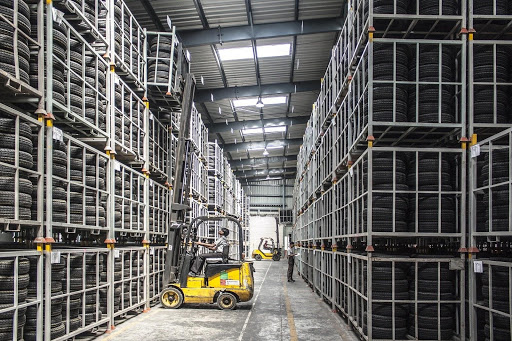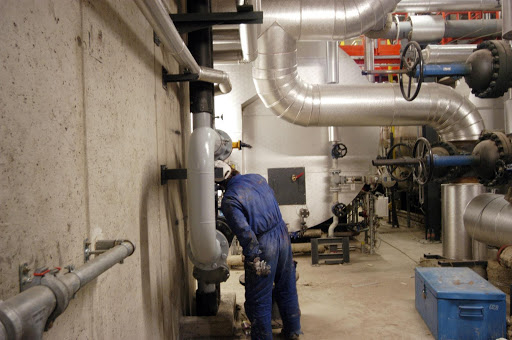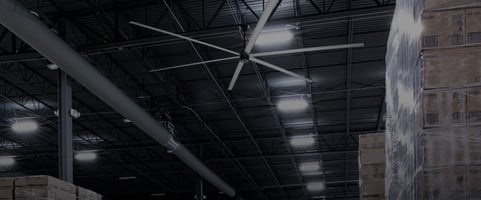If you ride horses or know a little about horses, you know they can work up a lather if worked...
7 Actionable Ways to Improve Warehouse Air Quality
I think you’ll agree with me when I say…
Warehouse air quality standards are more important than ever and it can be really hard to stay on top of it.
Poor indoor air quality, not only affects warehouse employees but also affects owners’ costs too. Poor indoor air quality (IAQ) has been tied to symptoms like headaches, fatigue, trouble concentrating, and irritation of the eyes, nose, throat, and lungs. This may be caused by formaldehyde, cigarette smoke, grease, pollen, asbestos, dirt, lead, ammonia, and other sources of pollutants. Warehouse spaces not only have physical safety risks, but also health risks that can generate over periods of time. Many of these impacts can take years to show up.
Fortunately, we’ve seen many warehouses improve their air quality and reduce health risks over time and we’d love to share our finds with you. The best part is you don’t need to be an air quality expert and many of these fixes won’t cost you a fortune!
Let’s get started.
- Identify Building Factors That Cause Poor Air Quality
- Keep Your Workplace Clean
- Improved Building Ventilation
- Air Cleaning Devices
- Change Your HVAC Filters Regularly
- Increase Ventilation With High Volume Low-Speed Fans
- Temperature and Moisture Regulation
1. Identify Building Factors That Worsen Indoor Air Quality

Many factors contribute to poor warehouse air quality. The first step to improving air quality is to identify problem areas. Here are some common warehouse air quality issue areas:
- Chemical emissions from manufacturing processes or raw materials
- Exhaust fumes from vehicles delivering and picking up goods. Forklifts can contribute to this also.
- HVAC systems that are inefficient, broken, or have old filters
- Poor ventilation and air circulation in the building
- Mold from dampness, water leaks, or high humidity seasons
- New construction in the building
A great way to identify air quality issues in your warehouse is to ask your warehouse employees. Make sure to listen and see if they are complaining about bad smells, stuffy buildings, or have health concerns. These symptoms may include headaches, fatigue, fever, cough, or shortness of breath. These symptoms and other respiratory conditions have been linked to poor indoor air quality.
Other things to keep an eye on are: temperature, humidity, and airflow. Keep an eye on it for several days and at various periods of the day.
Other serious issues that you’ll want to check for are radon, carbon monoxide levels, and asbestos. These can be extremely harmful and cause long-term health issues. You’ll be able to purchase or rent devices to check on these levels.
2. Keep Your Workplace Clean
Keeping a warehouse clean is a great first step to ensuring that you have a safe environment to work in. Having your warehouse managers create a regular maintenance and cleaning routine with goals will help ensure that you’re not overlooking areas that may end up being problems. Empower your employees to keep their workspace clean and have the right cleaning supplies (that do not contain chemical pollutants) readily available. Having a clean warehouse will not only help improve your air quality but will also improve workplace productivity. A win-win!
3. Improved Building Ventilation
Improved ventilation is an essential step to improving warehouse air quality and reducing indoor pollutants. It is also critical for your workers’ health and the longevity of your equipment. Not only that, it will save you lots of money down the road. In the summer months, it’s critical to reduce the build-up of heat and humidity and if your ventilation system isn’t properly maintained, these levels can become unbearable. In the winter months, it’s important to be aware of ventilation levels. It is in these months that carbon monoxide poisoning is more common as doors and windows may be closed.
Ventilation is also very important in removing hazardous fumes. Smoke from gas-powered vehicles, like forklifts, without proper ventilation can become extremely hazardous for employees. HVLS fans are great for keeping air circulating and also help keep your employees cool and reduce the effects of humidity. HVLS fans work great with HVAC and increase the efficiency of those systems.
4. Air Cleaning Devices
Commercial air cleaning devices are a great way to improve IAQ levels and in most cases, you don’t need to hire professionals. Here are a few that we recommend using.
Vacuums
Cleaning surfaces are very important to keep indoor air quality levels high. Make sure that your filters are properly maintained and all equipment is in working order to make the most of your time.
Air Purifiers
Air purifiers in support of your HVAC system are a great way to keep the indoor air quality clean in the warehouse. Additionally, they are excellent in helping employees suffering from allergies and in conjunction with a HEPA filter they can remove the smallest particles from the air. Installation can be done on the warehouse floor, in offices, or as mounted units. Adding air purifiers is a great way to improve warehouse air quality.
Air Scrubbers
Air scrubbers are great for removing harmful chemicals, gasses, and toxic particles from the air. Thousands of feet can be covered with a single air scrubber to be efficient in a large warehouse. Different from air purifiers, wet or dry scrubbers are used to clean the air as opposed to a HEPA filter. What an excellent way to improve air quality for workers. In addition, air scrubbers can either be portable or installed in your HVAC system. Many times air scrubbers are used specifically to remove an influx of harmful contaminants or chemicals. If you’re deciding between an air purifier vs an air scrubber, air scrubbers tend to be more effective.
5. Change HVAC Filters Regularly

Dirty filters that are filled with dust and debris will reduce airflow. Fortunately, with regular maintenance, you can cure many warehouse air quality problems with clean filters.
We’ve seen this question posed many times, “how often should I change my air filters?”. There are various answers, but it’s typically best to change filters 3-4 times a year and make sure to do it on a regular pattern. This can vary depending on the conditions of your environment. For instance, if air filters are used for medical or telecom, then you’ll need to replace filters more regularly. So, make sure to do your homework on this subject.
6. High Volume Low-Speed Fans
As shown above, airflow is very important to keep indoor air quality levels safe. Whether it’s your ventilation, filters, or air conditioning systems and heating systems, keeping air moving is essential. One major way to assist in increasing airflow to help all your other systems is with an HVLS Fan. These fans move a ton of air, and they do it quietly through a large design that spins slowly. They can draw fresh air from the outside and blend it with the stale air in the warehouse to create a better environment.
HVLS Fans will not only improve indoor air quality through massive air blending/movement, but they will also help your energy costs. Overall, HVLS fans are much more efficient to run than typical HVAC systems and have been proven to help warehouse temperature control and cool employees by up to 8° F! As the inventor of HVLS Fans, we are passionate about keeping warehouses cool and clean. To learn more about which size fan might work for your warehouse, check out our HVLS Fan Selector Tool.
7. Temperature and Moisture Regulation

As noted above, keep a close eye on the vitals of your warehouse. This includes checking temperature and humidity levels to make sure that they are in line with your goals. Humidity can be a breeding ground for air pollutants like mold and dust mites and can even cause skin irritation if it’s too low.
A great way to ensure that you have reasonable temperature and humidity levels is with proper airflow and ventilation. Airflow will keep your employees cool and reduce your humidity levels by replacing stale air with fresh air. HVLS ceiling fans are certainly a great way to do this. You can learn more about how HVLS Fans Control and Reduce Humidity on our blog.
Now it’s your turn
Remember it’s up to the business owner to recognize the impact on workers that poor air quality can have. As long as you have scheduled maintenance, most building air quality issues can be resolved.
I’d like to hear what you think! Which techniques have been the most beneficial in your warehouse?
If you have any questions, please don’t hesitate to contact us!



